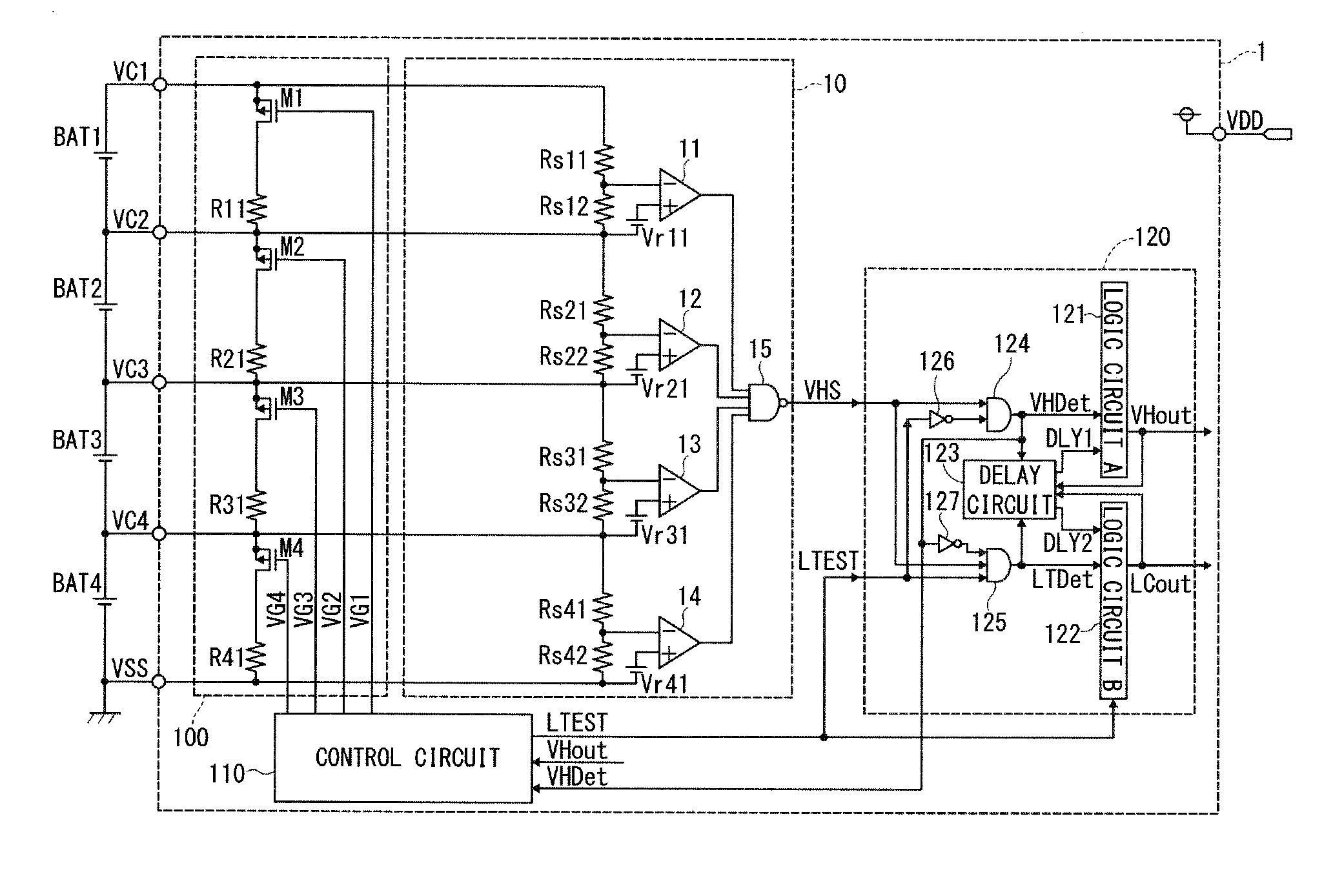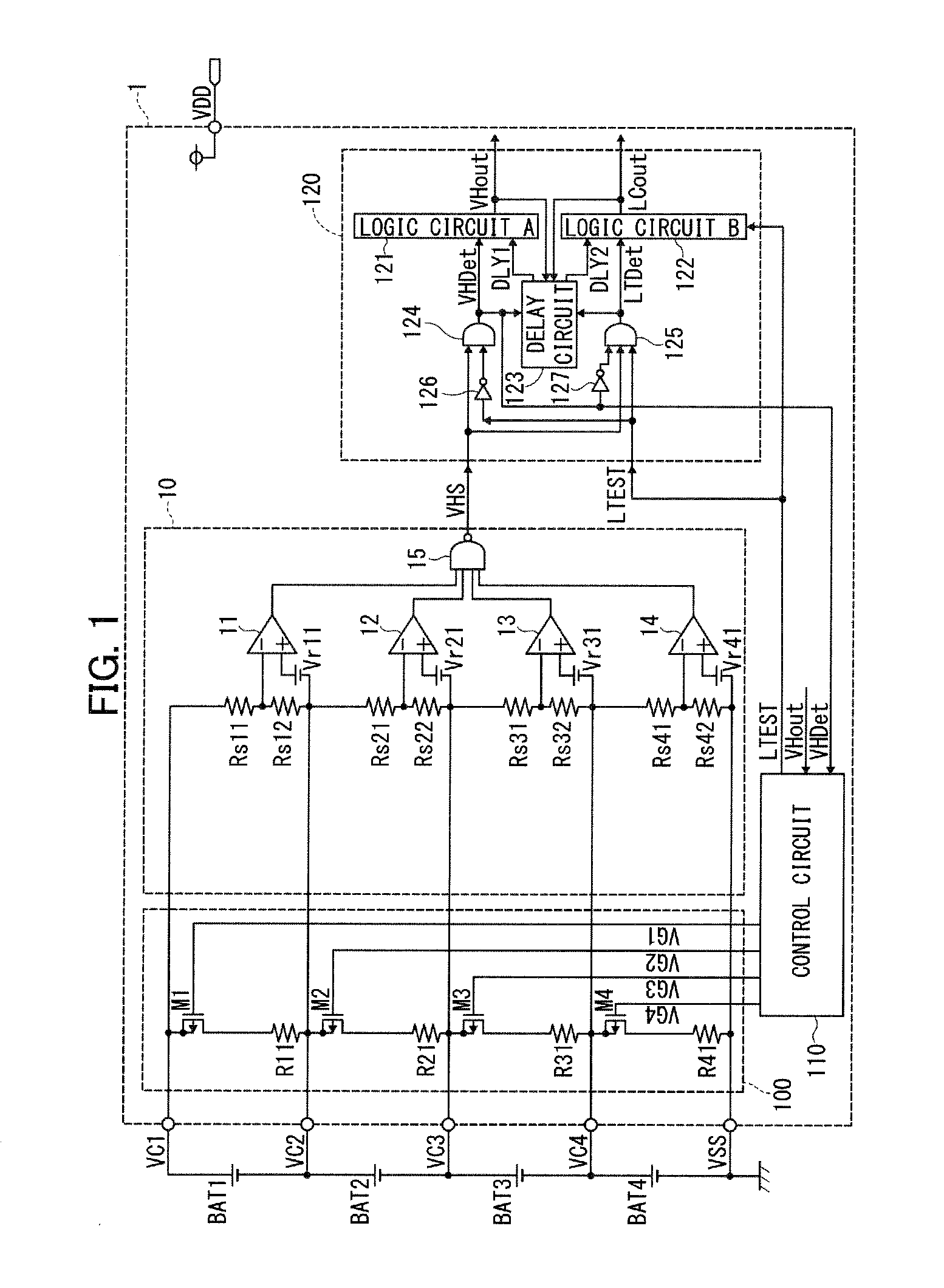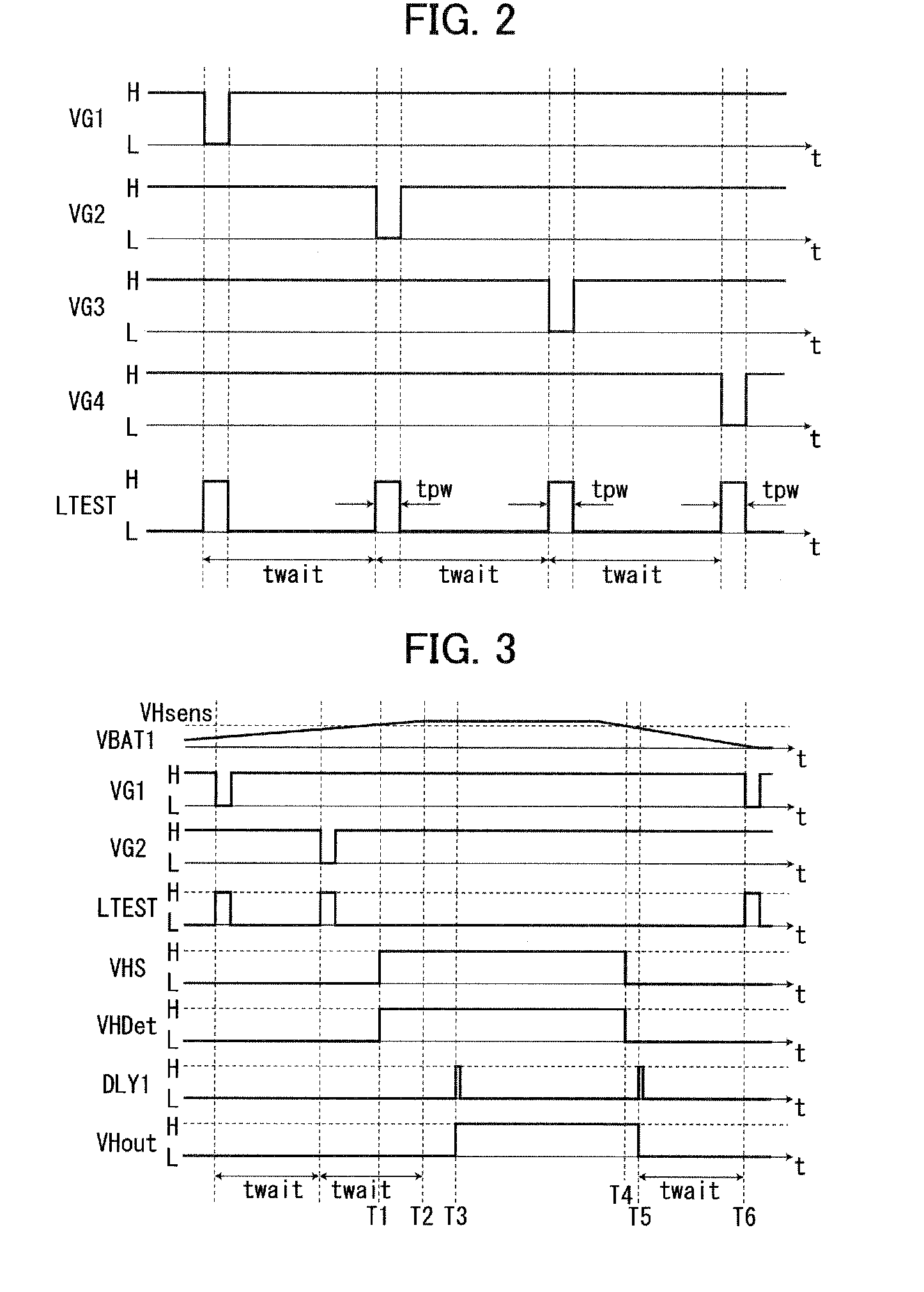Protective semiconductor device for secondary cell
- Summary
- Abstract
- Description
- Claims
- Application Information
AI Technical Summary
Benefits of technology
Problems solved by technology
Method used
Image
Examples
first embodiment
[0027]A first embodiment of the present invention relates to a protective semiconductor device that protects a plurality of secondary cells connected in series and has the following configuration.
[0028]The protective semiconductor device includes a voltage-sense resistance connected in parallel with the secondary cells to monitor a voltage. A resistance which has a smaller resistance value than that of the voltage-sense resistance is temporarily connected in parallel with the voltage-sense resistance at constant time intervals. If a disconnection between the protective semiconductor device and the secondary sell is not generated, the fluctuation in voltage by the secondary cell is not generated at a connecting terminal of the protective semiconductor device, connected to the secondary sell. On the other hand, if the disconnection between the protective semiconductor device and the secondary sell is generated, voltage fluctuates along with the fluctuation in the resistance value caus...
second embodiment
[0066]The protective semiconductor device according to the first embodiment of the invention has a problem with a false detection of the disconnection between the secondary cells and the protective semiconductor device even though no disconnection has arisen due to the generated voltage at both ends of the resistance forming a low-pass filter during the disconnection test, if the device is connected through a low-pass filter as a measure against noise. Therefore, the protective semiconductor device according to the second embodiment of the invention is characterized by reducing the false detection by the comparators, and the characteristics will be achieved in the following way. By connecting the resistances in series to each voltage-sense resistance of all the secondary cells respectively, while the resistance which has a smaller resistance value is temporarily connected in parallel to the voltage-sense resistance, the inversion level of the comparator connected with the voltage-se...
third embodiment
[0127]The protective semiconductor device according to the second embodiment of the invention sometime does not function normally the operation of the detection of disconnection, if the circuit including the resistance having a lower value is connected to the each secondary cell in parallel in order to even out the voltage of the plurality of the secondary cells. Therefore, the protective semiconductor device according to the third embodiment of the invention enables to function normally the operation of the detection of disconnection by disabling the resistance having the lower value when detecting the disconnection.
3.1 Configuration of the Protective Semiconductor Device
[0128]FIG. 9 is the schematic diagram of the protective semiconductor device 1 according to the third embodiment and the secondary cells. FIG. 10 is the practical schematic diagram of the protective semiconductor device according to the third embodiment and the secondary cells. The protective semiconductor device 1...
PUM
 Login to View More
Login to View More Abstract
Description
Claims
Application Information
 Login to View More
Login to View More - R&D
- Intellectual Property
- Life Sciences
- Materials
- Tech Scout
- Unparalleled Data Quality
- Higher Quality Content
- 60% Fewer Hallucinations
Browse by: Latest US Patents, China's latest patents, Technical Efficacy Thesaurus, Application Domain, Technology Topic, Popular Technical Reports.
© 2025 PatSnap. All rights reserved.Legal|Privacy policy|Modern Slavery Act Transparency Statement|Sitemap|About US| Contact US: help@patsnap.com



